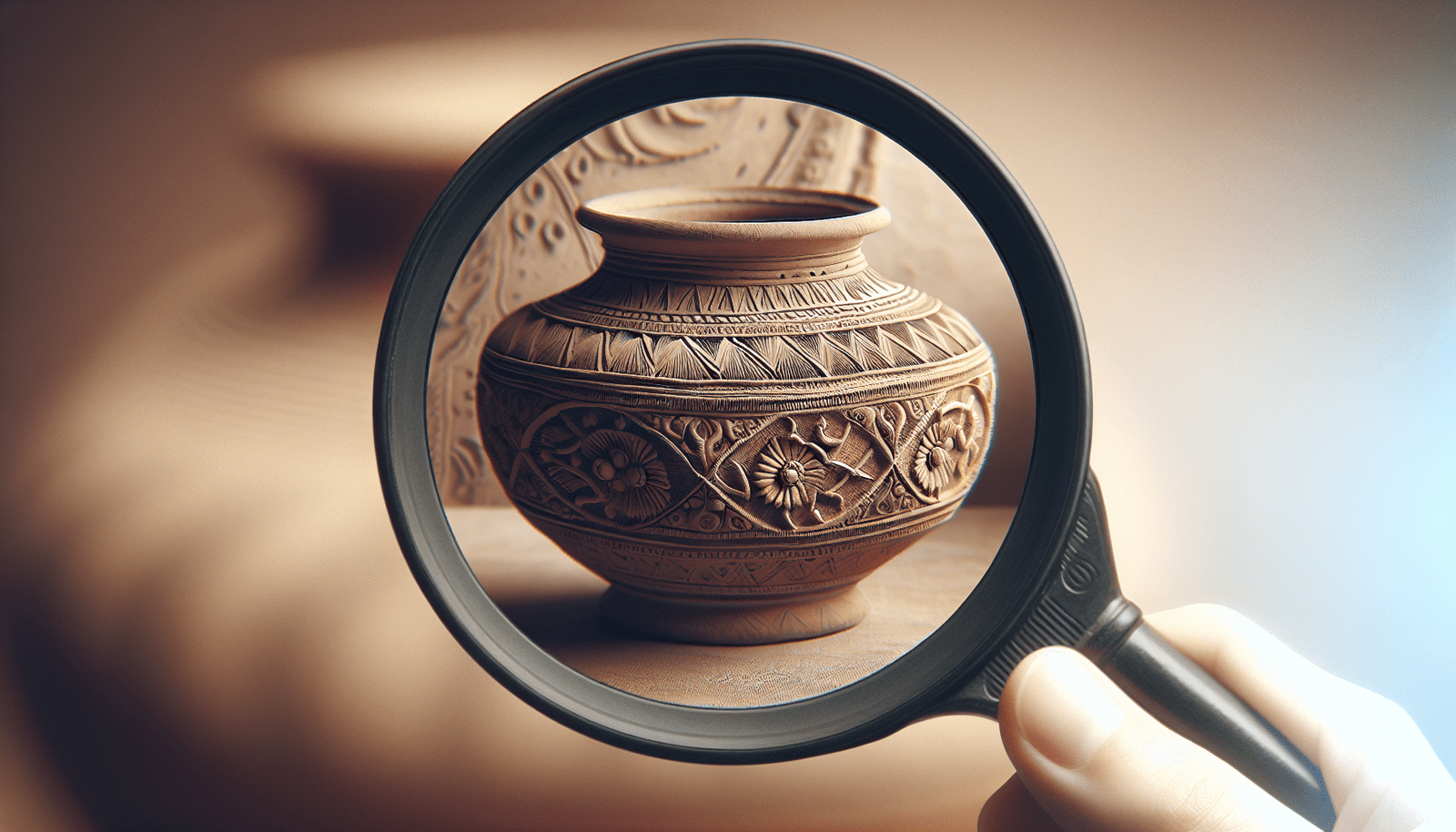Exploring Advanced Methods for Authenticating Ancient Pottery: How can one truly determine the authenticity of an ancient pottery piece? In a field where history, art, science, and technology converge, authenticating ancient pottery is both an art and a science. Modern researchers face the challenge of distinguishing genuine artifacts from skillful reproductions and forgeries, a task made more complex by the increasing sophistication of counterfeit techniques. This article aims to explore the cutting-edge methods used to authenticate ancient pottery, encompassing historical background, key concepts, methodologies, and case studies which together form a comprehensive analysis of this intricate subject.

Table of Contents
Historical Context of Pottery Authentication
Origins of Pottery and Its Significance
Pottery, one of humanity’s earliest technological achievements, has been produced for over 20,000 years, serving myriad roles from daily utility to artistic expression. The relics of ancient pottery provide invaluable insights into past cultures, facilitating a profound understanding of human history. This makes the authentication of pottery essential not only for historical accuracy but also for its cultural significance.
Historical Efforts in Authentication
The endeavor to authenticate pottery can be traced back to archaeology’s early days in the 19th century. Initially reliant on expert opinion and stylistic analysis, the discipline has since evolved significantly. The advent of scientific methods in the mid-20th century marked a turning point, enabling a more objective examination of ancient ceramics.
Key Concepts in Pottery Authentication
Defining Authenticity in Ancient Pottery
Authenticity in ancient pottery refers to the verification of an artifact’s age, origin, and originality. Unlike modern objects, ancient pottery presents unique challenges: natural weathering, burial conditions, and past restoration efforts must all be factored into authentication.
The Role of Provenance
Provenance, the recorded history of an artifact, assists in linking pottery to specific times and places. However, due to incomplete records and sometimes dubious documentation, provenance alone is insufficient for determining authenticity, necessitating the integration of scientific techniques.

Scientific Methods in Authenticating Pottery
Thermoluminescence (TL) Dating
Thermoluminescence dating is a cornerstone in the authentication of ceramics. This method measures the accumulated radiation dose in a pottery sample, effectively determining the last time the item was heated. While accurate, TL dating must be carefully calibrated to prevent erroneous results caused by environmental factors or material inconsistencies.
Isotope Analysis
Isotope analysis examines the elemental composition of ceramic materials. By comparing isotope ratios of clays and glazes, scientists can infer the geographical origin of archaeological pottery, lending clues to its authenticity and helping to prevent geographical misattribution.
X-ray Diffraction (XRD) and Spectrometry
X-ray diffraction and various forms of spectrometry analyze the mineral and chemical composition of pottery. These non-destructive techniques provide insight into the materials and methods used by ancient potters, supporting or refuting claims to authenticity through comparative analysis with known artifacts.
Scanning Electron Microscopy (SEM)
Scanning Electron Microscopy offers high-resolution imaging of ceramics at a microscopic level. SEM analysis helps identify surface treatments, glaze structures, and typological features that are consistent or inconsistent with specific historical periods, thereby contributing to the authentication process.
Step-by-Step Guide to Authenticating Pottery
Initial Visual Inspection
Before employing advanced techniques, experts begin with a detailed visual inspection. This includes examining the style, motifs, and production techniques indicative of specific cultural contexts.
Sampling and Preparation
In cases where scientific analysis is warranted, careful sampling and preparation of pottery fragments or powder are conducted. The integrity and representativeness of the sample are crucial for accurate scientific results.
Integration of Techniques
A multi-faceted approach, combining different scientific methods, enhances the overall reliability of authentication. For instance, thermoluminescence dating may be confirmed by complementary techniques such as isotope analysis, leading to more robust conclusions.
Analysis of Results
Interpreting results requires a sophisticated understanding of both the scientific data and archaeological context. Experts synthesize findings to construct a comprehensive profile of the pottery, including age, provenance, and authenticity status.

Challenges and Considerations in Pottery Authentication
Counterfeiting and Reproduction
The rising sophistication of counterfeiters, coupled with advanced reproduction techniques, poses a significant challenge in pottery authentication. Fakes may mimic ancient characteristics so convincingly that they deceive both collectors and experts.
Environmental and Material Influences
Natural weathering, soil chemistry, and other environmental influences can falsely alter scientific measurements, complicating the authentication process. Specialists account for these factors through careful control measures and contextual analysis.
Ethical and Legal Implications
Authenticating ancient pottery carries ethical responsibilities and legal implications. Incorrect attributions can lead to financial losses, cultural misappropriation, and ethical dilemmas about the ownership and repatriation of cultural property.
Case Studies and Real-World Applications
Noteworthy Success Stories
Examining specific instances where advanced methods have successfully authenticated or exposed fake ancient pottery further elucidates the effectiveness of these techniques. Examples include the dating of Chinese ceramics using TL or the identification of Mycenaean pottery through isotope analysis.
Comparisons Across Cultures
Different techniques vary in effectiveness depending on cultural and geographical contexts. By comparing methods across cultures (e.g., Ancient Greek versus Mesoamerican pottery), the strengths and limitations of each technique are highlighted, fostering cross-cultural understanding in the authentication process.

Future Directions in Pottery Authentication
Technological Advancements
As technology evolves, new methods in material science and digital imaging hold promise for more precise and accessible authentication processes. Nanotechnology and improved imaging techniques are being explored to delve deeper into the material composition of ancient ceramics.
The Role of Artificial Intelligence
Artificial Intelligence (AI) is poised to revolutionize pottery authentication by analyzing vast datasets and detecting patterns indiscernible to human observers. Machine learning algorithms could potentially assess stylistic and material data, offering probabilistic evaluations of authenticity.
Conclusion
The authentication of ancient pottery is a multi-disciplinary endeavor, integrating history, art, and science to unravel the truth of human cultural artifacts. While challenges persist, continuous advancements in technology and methodology offer promising prospects for the future. By applying a rigorous and informed approach to pottery authentication, one not only safeguards historical integrity but also enriches the collective understanding of humanity’s past. This complex yet fascinating process underscores the intricate dance between art and science, echoing the multiplicity of stories told by each ancient shard.

How to Spot Authentic Pre-Columbian Artifacts: Methods, Tricks, and Tests
Professional Strategies for Authenticating Star Wars Memorabilia

